Drag and drop the EVPN components from the left onto the correct planes on the right.
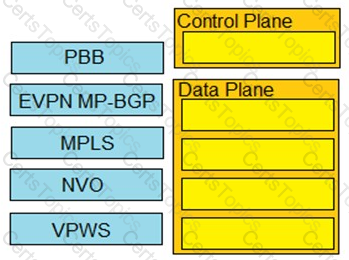
Refer to the exhibit.
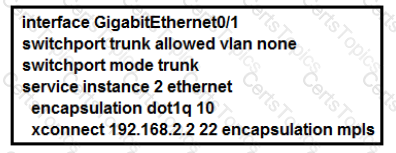
Drag and drop the EVC configuration items from the left onto the correct descriptions on the right.
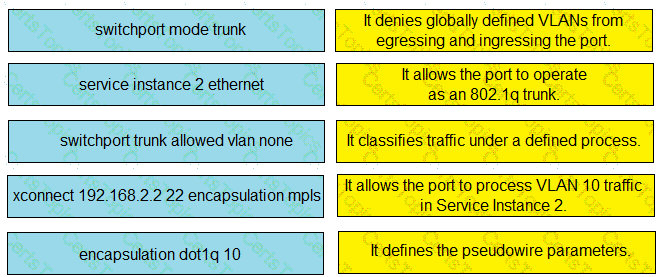
While troubleshooting EoMPLS configuration problems, which three parameters should an engineer match between the two ends of the pseudowire configurations? (Choose three.)
Refer to the exhibit.
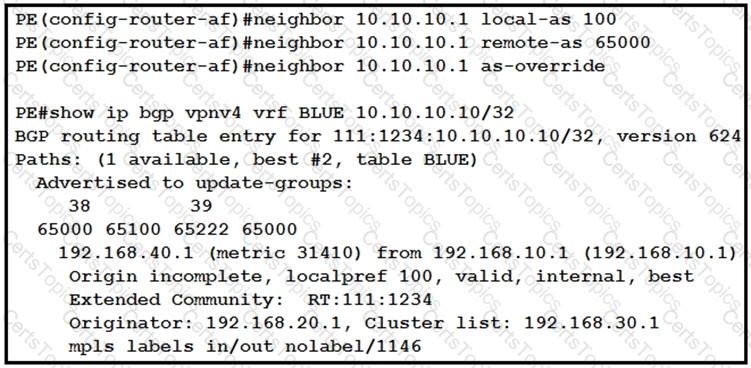
While provisioning a new BGP session between the PE and CE router, you issue the as- override command. Which statement describes modification of the prefix before being sent to the CE router (10.10.10.1)?
Which condition must be met before an environment can support CSC?
Which is the primary function of a MPLS L3 VPN route target?
Which optional information can be included with an IPv6 ping to support the troubleshooting process?
Refer to the exhibit.
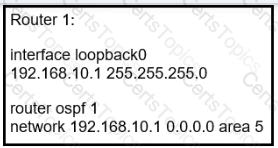
Refer to the exhibit Router 1 is a P router in the ISP MPLS core A connected P router cannot generate an MPLS label for the router 1 loopback0 interface Which action resolves this issue?
Refer to the exhibit.

What is shown in this output?
What is the primary function of a VRF on a router?